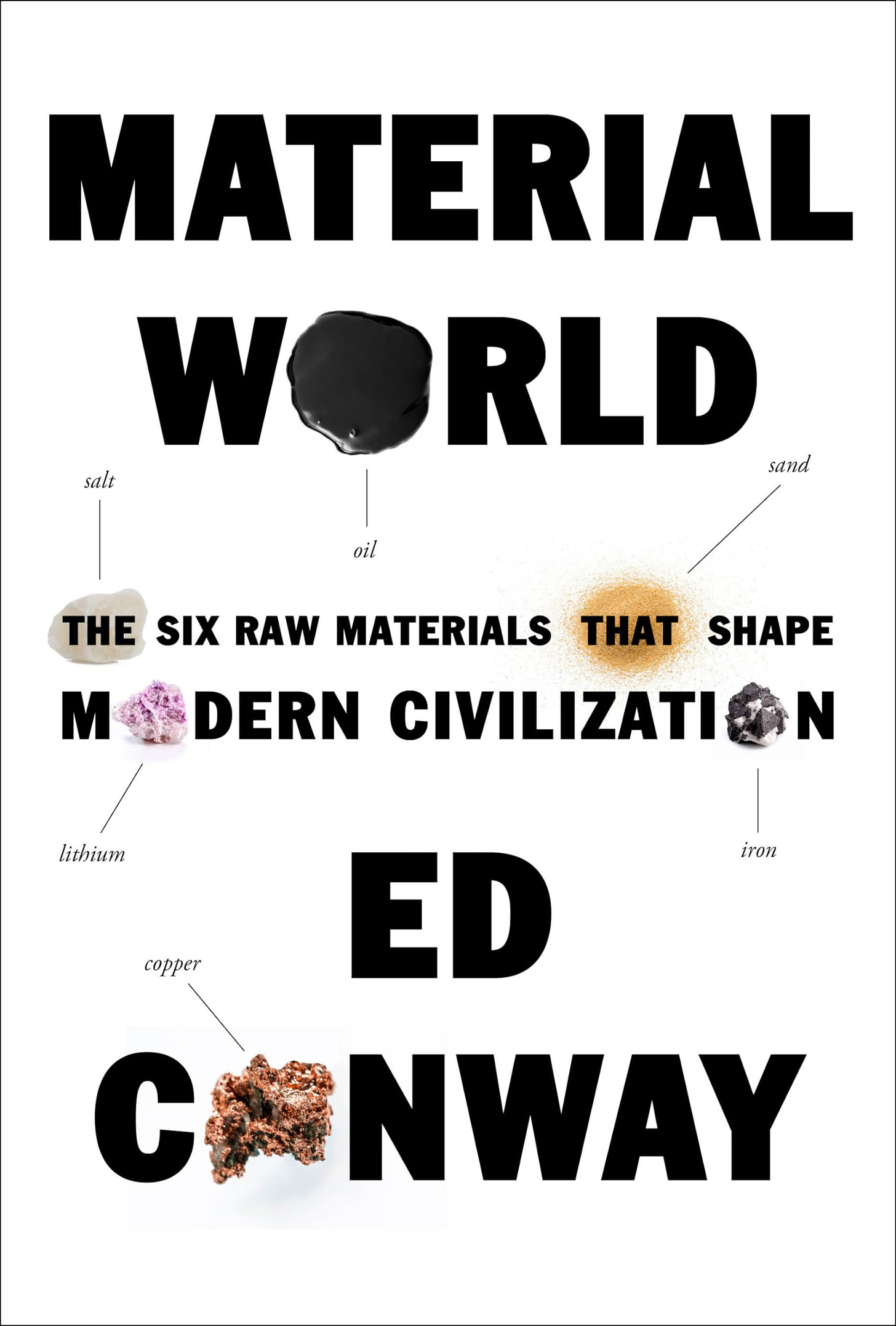Intro
This book is about sand, salt, iron, copper, oil, and lithium—basic materials that quietly power our entire world. And we dug more materials out of the earth in 2017 than in all of human history before 1950.
We like to think we live in the cloud, but everything still relies on stuff dug out of the ground. In Material World, Ed Conway goes deep (sometimes literally) into the global systems behind smartphones, buildings, electric grids, and more. It’s a book about the physical reality hiding beneath our digital lives.
“Taking simple things, turning them into complex, amazing products. That’s the human miracle.”
-Ed Conway
Would You Enjoy This Book?
If you're a “Wikipedia guy” or “Wikipedia girl,” this book is the right fit for you. And by “Wikipedia guy,” I mean the kind of person who ends up reading about the Thirty Years’ War at 2 AM because you got sidetracked while googling how glass is made (shoutout to the "Wikipedia boyfriend" meme).
The book writes stories that connect tons of disciplines: history, materials science, environmental policy, economics, and geology. If you like to understand how the world works, you’ll enjoy this.
About the Author
Conway’s a journalist (with awards and all that), and he certainly wrote this book like one - curious, a little alarmed, always observing. He visits mines and factories, talks to the people who run them, and shows occasional existential crises about humanity’s obsession with raw materials between the lines. The book reads like someone discovering things and trying to process how weird and extreme our supply chains really are.
What You’ll Learn
Each chapter focuses on a material and follows its journey from raw stuff to something useful in your life, e.g., a smartphone you are wearing in your pocket. Along the way, you’ll get answers to questions like:
Why is there a sand theft problem, and why is sand banned from being taken off some beaches if it’s onr of the most abundant materials on earth?
Can we make concrete without wrecking the climate?
Why do your phone parts travel across continents multiple times before reaching you?
What makes lithium so geopolitically messy?
The book is a great overview of how physical materials quietly shape the economy, the environment, and our everyday lives. But it also contains horror stories of exploiting whole societies because of materials, such as King Leopold II of Belgium committing crimes against humanity to collect natural rubber in the Congo Free State.
What I Was Missing
Pictures!! This book would absolutely thrive with some visuals—photos of mines, diagrams of supply chains, maps of material flows. Describing so many visuals that you don’t see every day, I can imagine the book even in the form of a comic.
Weirdly, the book made me want to travel, which I’m usually indifferent about. I now crave to see all the copper mines and lithium ponds for myself.
Join the Reading & Writing Club
Last time I reviewed The Art of Doing Science and Engineering, and the next book I am reading is The Beginning of Infinity.
I’m also starting a casual Slack community for people who like to read, write, and share ideas. The Bookclub will live inside it, but we’ll also swap articles, drafts, and links, or even give writing feedback and help share and support each other’s work.
Fill-in this form if you’re interested, and I will ping you in the right time.










